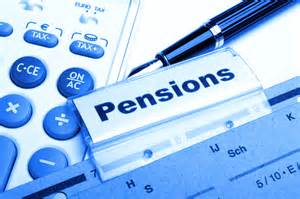“Retirement is wonderful if you have two essentials – much to live on and much to live for” is a favoured quote that is more and more pertinent to those in the twilight of their careers. We are an ageing demographic where men and women are living longer and healthier, 800,000 over the age of 66 currently but 1.8million over this age in less than 26 years’ time ! Our birth rates and immigration factors are also not conducive to think we can support this ageing population in 26 years’ time. While recent migrant numbers will help, there is always the hope that those forced to leave their own country will want to go back when the time is right. So where is the money coming from that is going to support our pensions in later years ?
Hence a little too late, auto-enrolment is finally being introduced toward the end of 2024 while the current government has also introduced the notion of incentivising those who wish to delay their pension at age 66 by a year for a 4% higher weekly payment ( this means you would want to live until at least age 92 to justify this decision ! )
John Lowe of MoneyDoctors.ie demystifies and simplifies what you need to know about 5 basic pension thoughts…
- The pension is the best investment in Ireland
If you are on 20% or 40% tax rate, for every € 100 you invest in your pension the government give you back € 20 or € 40. Means you are up in your investment 20% or 40% before you start – obviously being on the higher tax rate makes it more advantageous. Take the average annual growth in the stock market over the last 30 years ( 1991 to 2020 ) it was 10.72% meaning that your investment with the tax relief exceeds 50% per annum – I know of no other investment that will give you that return !
- The older you are the more you can contribute to your pension to maximise your tax relief.
So for example if you are between 30 and 40 years of age, you could invest up to 20% of your net relevant earnings into your pension. e.g. € 40,000 annual salary allows you to invest up to € 8,000 per annum or € 666.67 per month into a pension meaning that you will receive a tax credit of € 3,200 annually or € 266.67 per month so effectively the pension is only costing you € 400 per month. If you are over 40, the threshold increases to 25% of your net annual earnings, 30% when you hit the age of 50…35% at age 55 and 40% at age 60.
The new auto-enrolment which starts toward the end of 2024 is as Shakespeare said Much Ado About Nothing… the current government thinking is at the end of 10 years of contributions from both employer (6%) and employee (6%) plus a government contribution (2%), you can look forward to a maximum of 14% each year invested in your pension….
Today a 22 year old, straight out of 3rd level college, can invest 15% on their own income into a pension and obtain potentially 40% tax relief on it instantly from year one.
- Occupational pensions ( set up by your employer ) generally have a Normal Retirement Age – NRA – of 65 ( or 66 in some cases and for executives age 60 ) while setting up your own pension will allow you to access your fund at age 60 (Personal Retirement Savings Account – PRSAs)
With the retirement age being pushed out to age 68 from 2039 – only 15 years away, it means MOST tax payers will need to maintain employment til that age when the State Pension kicks in, currently € 277.30 per week. Even though currently the government relented and give a benefit payment of € 232 per week to those retiring at 65 for the year before the State Pension kicks in at age 66….. plus for a dependent adult an additional weekly € 154 and € 46 per week to children under 12 years and € 54 per week to children over the age of 12. Don’t delay, invest something into a pension.
- Working in different companies means you may have a collection of pensions that you may have to wait to access until your NRA (Normal Retirement Age).
Those companies in the interim could go out of business, declare bankruptcy or liquidate. You will also need a trustee from your former company to sign off to access your pension on retirement date. You could have a problem.
This could be resolved by simply transferring that occupational pension into a Personal Retirement Bond. This has many benefits…
- You are now in control of the pension
- You can decide where it is invested
- At age 50, irrespective of your NRA, you can commute this fund
- Take 25% tax free
- Transfer the balance into an annuity or an Approved Retirement Fund (ARF)
- With the latter you choose the funds ( to maximise returns )
- Once aged 60, you must take out 4% per annum ( called imputed distributions ) and on reaching age 71, increase to 5% per annum.
- You could also draw down up to a maximum 15% in total each year without penalty but obviously you will run out of funds much quicker…
- If you die and you have a spouse/civil partner, the balance of the ARF automatically is transferred to that person as if it is their own ARF. If both you and your partner die, it goes to your children ( they pay 30% in tax on the fund ) or your estate if you do not have children.
It will certainly be worth your while to check out if your old pension can be transferred to a Personal Retirement Bond or Buy Out Bond…
- “Commuting your pension” When you reach retirement age, your pension fund becomes accessible to you. Many people are unaware of what happens next or what the best option is for them…
At retirement age your fund is say € 500,000. What now ?
- You can take 25% tax free ( € 125,000 )
- With the balance of € 375,000, you can go two ways
-
- ANNUITY
- A fixed interest rate on the day of retirement that never changes. Current annuity rates are low
- ANNUITY
( they are linked to bank interest rates ) so at c. 4%, your monthly annuity would be € 1,250 per month for life…
-
-
- This is also taxable and generally only guaranteed for the first 5 years
- In the 6th year if you die the insurance company keeps the € 375,000 NOT your family or estate.
-
-
- APPROVED RETIREMENT FUND (ARF)
- You choose WHERE you want to invest ( so even in retirement you still have to manage your fund to maximise returns )
- Once aged 60, you MUST take 4% annually ( or in monthly payments of € 1,250 ) called imputed distributions
- On reaching age 71, you MUST take 5% annually ( or monthly € 1,562.50 )
- You CAN take up to a maximum of 15% each year without penalty but obviously reducing the fund faster and shortening the payment span.
- If you die, the balance of the fund goes to your civil partner or spouse as if it is their ARF. If you both die, the fund goes to your children, if there are children, but they pay a 30% tax on the fund balance. If no children, the fund goes to your estate for distribution according to the wishes in your Will.
- APPROVED RETIREMENT FUND (ARF)
There you read through it – well done ! It really is in your best interest to start thinking pensions. Give me a call if you’re worried.

